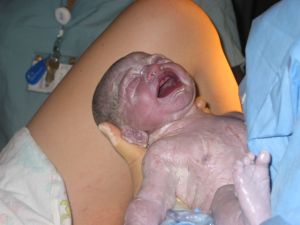 Our previous blog addressed Florida’s statutory scheme, known as NICA (Florida Birth-Related Neurological Injury Compensation Association, Sections 766.301-766.316 Florida Statutes (1988), for providing “compensation, on a no-fault basis, for a limited class of catastrophic injuries that result in unusually high costs for custodial care and rehabilitation.” See Section 766.301(2) Florida Statutes (1988). NICA is the exclusive remedy in cases that meet its requirements. Because its remedies may not be adequate to cover the damages, our blog encourages lawyers to make every effort to avoid NICA where the brain injury was caused by medical negligence. We explained that the remedies available under Florida’s traditional tort system often outweigh those under NICA.
Our previous blog addressed Florida’s statutory scheme, known as NICA (Florida Birth-Related Neurological Injury Compensation Association, Sections 766.301-766.316 Florida Statutes (1988), for providing “compensation, on a no-fault basis, for a limited class of catastrophic injuries that result in unusually high costs for custodial care and rehabilitation.” See Section 766.301(2) Florida Statutes (1988). NICA is the exclusive remedy in cases that meet its requirements. Because its remedies may not be adequate to cover the damages, our blog encourages lawyers to make every effort to avoid NICA where the brain injury was caused by medical negligence. We explained that the remedies available under Florida’s traditional tort system often outweigh those under NICA.
Where NICA can and should be avoided to pursue medical malpractice remedies, the Plaintiff must prove fault and damages to prevail. This blog addresses some of the common causation and damage issues.
Hypoxia, or a lack of oxygen, is the leading cause of brain injury in newborns. During labor, the uterus contracts in order to push the baby through the birth canal. (Pitocin, a drug used to induce labor, intensifies uterine contractions.) Throughout the labor process, obstetrical personnel are able to monitor the fetus’ heart rate and well being through electronic fetal monitoring. (Every labor and delivery unit in every hospital in the country, uses electronic fetal monitoring.) As the labor progresses and the contractions become stronger and more frequent, the baby is exposed to tremendous amounts of stress. As the stress mounts, underlying problems, such as a knotted or twisted umbilical cord, or a placental problem, become heightened. Time is of the essence when a problem is exposed. Any breakdown in the monitoring process, such as through inattention or misinterpretation, can prove costly. Moreover, proper lines of communication must be maintained between the nurses and the obstetrician. A failure to properly alert the physician or of the physician to respond appropriately, can have critical consequences.
The first step in investigating a brain injured baby medical malpractice case is to have the fetal monitoring strips reviewed by an expert for evidence of hypoxia, whether it was documented by the health care providers, and whether they acted appropriately.
Medical malpractice defendants will try to deflect responsibility by blaming the brain injury on something other than a lack of oxygen. Other excuses include infection and inflammation.
To help establish causation, experts will evaluate evidence such as fetal monitor strips, lab values, radiographic imaging, and the placenta and umbilical cord. The strips show the real-time status of the baby, against which the actions of the medical staff are measured to determine whether standards of care were breached.Through pH levels, and kidney and liver function readings, lab values can aid in determining if the brain injury was caused by hypoxia during labor and delivery. Magnetic Resonant Imaging (MRI), especially on the latest and most sophisticated machines, demonstrate the timing, location and pattern of the brain injury. Parts of the placenta and umbilical cord can be examined microscopically for evidence of knotting and inflammation. Disagreements among the experts over the meaning and results of the diagnostics are expected.
Proving causation is not the only hurdle the child’s representatives must overcome to secure relief for the child. A brain injured child will require significant amounts of medical care in the future. The key issues are: how much and what kind of care is needed, and for how long. Most severely brain injured children require 24 hour, skilled nursing care. Because this is tremendously costly, the defense will fight to limit the hours, the qualifications of the caregivers necessary (e.g., licensed vs. practical nurse), and argue that family members should do the job. The issue is about quality of life.
The second major damages issue is life expectancy. The defense will attempt to show a very limited life expectancy. It will rely on statistics that are skewered because they include children who have not received adequate medical care. The child’s representatives will make the point that quality medical care will extend the child’s life significantly.
Catastrophic injury cases require from legal counsel a high level of dedication and determination. The issues are complex, the consequences monumental.
************************************************
Contact us toll free at 866-785-GALE or by email to learn your legal rights.
Jeffrey P. Gale, P.A. is a South Florida based law firm committed to the judicial system and to representing and obtaining justice for individuals – the poor, the injured, the forgotten, the voiceless, the defenseless and the damned, and to protecting the rights of such people from corporate and government oppression. We do not represent government, corporations or large business interests.
While prompt resolution of your legal matter is our goal, our approach is fundamentally different. Our clients are “people” and not “cases” or “files.” We take the time to build a relationship with our clients, realizing that only through meaningful interaction can we best serve their needs. In this manner, we have been able to best help those requiring legal representation.
 Florida Injury Attorney Blawg
Florida Injury Attorney Blawg

